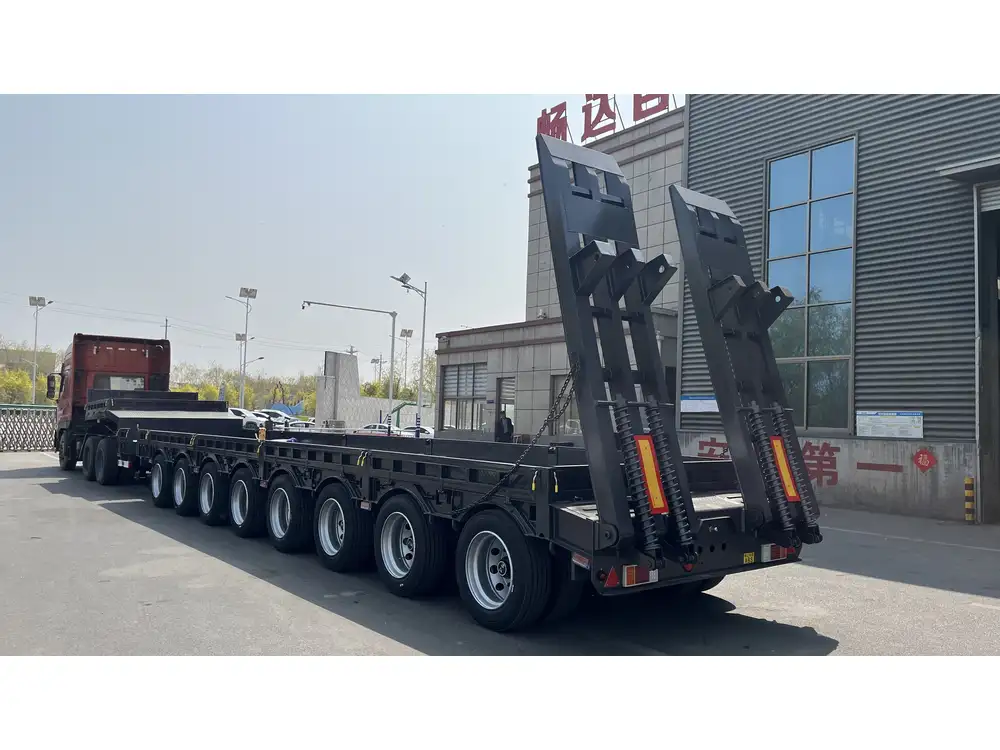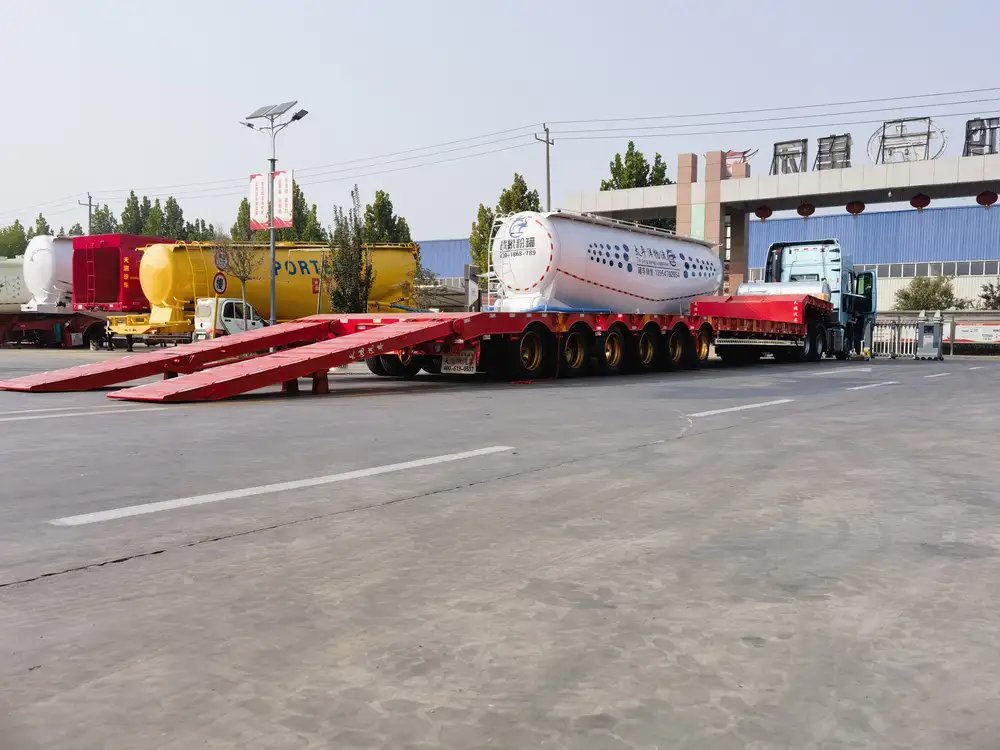Flatbed trailers are an indispensable component of the transportation and logistics industry. They enable the movement of various freight types, ranging from heavy machinery and construction materials to awkwardly shaped loads that can’t be accommodated by enclosed trailers. As manufacturers and users of flatbed trailers, understanding the maximum allowable dimensions, including length, is critical for optimizing transport efficiency and compliance with regulations. In this article, we will delve deeply into the specifics surrounding flatbed trailer lengths, regulatory frameworks, and best practices for effective utilization.
1. Regulatory Standards Affecting Flatbed Trailer Lengths
Before we examine the maximum lengths of flatbed trailers, it’s crucial to acknowledge the diverse regulations governing these vehicles. Different jurisdictions impose varying restrictions on trailer lengths to ensure safety and ease of traffic flow. Here’s a structured overview of where and how these regulations apply:
| Region | Maximum Length (feet) | Notes |
|---|---|---|
| United States | 48 to 53 | Most common lengths for commercial flatbeds |
| Canada | 48 to 53 | Varies by province, with some allowing up to 60 |
| European Union | 13.6 (approximately 44) | Adheres to stringent length regulations |
| Australia | 13.7 (approximately 45) | Permits varying configurations based on state |
1.1 United States Regulations
In the U.S., the Federal Highway Administration (FHWA) typically governs trailer dimensions, which can result in variances from state to state. For instance:
- Standard Lengths: A typical flatbed trailer measures between 48 to 53 feet, with 53-foot trailers being more common in the freight transportation industry due to their ability to carry more goods without exceeding weight limits.
- Interstate vs. Intrastate: Some states allow longer trailers on interstate highways. It’s essential to check local laws, especially when operating in multiple states.

1.2 Canadian Regulations
Canada mirrors many U.S. regulations but varies by province. Certain provinces permit longer configurations:
- California: Maximum length is 53 feet.
- Ontario: Similar to U.S. standards for maximum lengths.
- Quebec: Allows for special permits for longer trailers under specific conditions.
1.3 International Standards
Flatbed trailer regulations also exist outside North America. The European Union’s adherence to a length of 13.6 meters (approximately 44 feet) and Australia permitting 13.7 meters exemplify said international restrictions.
2. Types of Flatbed Trailers and Their Typical Lengths
Different types of flatbed trailers are designed for specific cargo types, and they come in various lengths. Understanding these variants can help in selecting the best option based on freight necessities.

2.1 Types of Flatbed Trailers
Standard Flatbed Trailers:
- Typical Length: 48 to 53 feet.
- Common Uses: General freight, construction materials.
Step Deck Trailers:
- Typical Length: Generally 48 or 53 feet.
- Common Uses: Taller loads that require lower loading heights.
Double Drop Trailers:
- Typical Length: Available in 48 to 53 feet, allowing several drops.
- Common Uses: Heavy machinery or items with a significant height.
Extendable Flatbed Trailers:
- Typical Length: Can extend from 48 feet up to 80 or even 100 feet.
- Common Uses: Long loads like steel beams and large pipes.
2.2 Length Capacity Comparison Table
| Flatbed Type | Standard Length (feet) | Max Length Capacity (feet) | Typical Cargo |
|---|---|---|---|
| Standard Flatbed | 48 – 53 | 53 | General cargo, building materials |
| Step Deck | 48 – 53 | 53 | Oversized machinery, equipment |
| Double Drop | 48 – 53 | 53 | Large machinery and tall items |
| Extendable Flatbed | 48 | Up to 100 | Long structural items, logs |
3. Importance of Understanding Maximum Lengths
Knowing the maximum lengths of flatbed trailers isn’t simply about compliance; it’s integral to operational success and efficiency. Here are influential factors to consider:

3.1 Compliance with Transportation Laws
Adhering to length regulations helps avoid penalties and ensure smooth operations across jurisdictions. Fines can accrue from exceeding lengths, alongside potential traffic delays due to non-compliance.
3.2 Optimizing Load Capacity
Maximizing the use of available length can significantly impact profitability. Longer trailers can carry more cargo in a single trip, reducing operating costs per load.
3.3 Enhancing Safety on the Road
When trailer lengths comply with legal standards, overall road safety is enhanced. Oversized trailers can lead to unpredictable driving conditions and increased risk of accidents.

4. Factors Influencing Flatbed Trailer Length Choices
Choosing the appropriate flatbed trailer length is not solely dictated by regulations. Several influencing factors come into play:
4.1 Freight Type and Dimensions
Understanding the nature of the cargo dictates the necessary length:
- Oversized Loads: If transporting machinery or lumber exceeding standard dimensions, an extendable flatbed may be required.
- General Freight: Standard lengths suffice for most goods.
4.2 Weight Considerations
Different lengths can also accommodate weight variances. Compliance with weight restrictions becomes essential, affecting length and ultimately, transport choices.

4.3 Fuel Efficiency and Driveability
Longer trailers may sometimes lead to decreased fuel efficiency. Balancing length with overall truck performance is vital.
5. Best Practices for Maximizing Efficiency with Flatbed Trailers
To fully utilize flatbed trailers within regulated lengths effectively, we suggest adhering to the following best practices:
5.1 Weight Distribution
Even distribution of weight across the trailer ensures safety and compliance, optimizing handling when on the road.

5.2 Load Securement
Ensure that all cargo is securely fastened—this is essential not only for compliance but also for safe transport and prevention of damage.
5.3 Route Planning
Plan routes considering potential restrictions posed by overhead clearances, tight turns, and specific length regulations applicable in certain areas.
5.4 Maintenance and Inspection
Regular trailer maintenance can prevent issues that might lead to any weight or length discrepancies.
| Best Practice | Description |
|---|---|
| Weight Distribution | Maintain balanced weight to improve handling |
| Load Securement | Secure cargo to prevent movement during transport |
| Route Planning | Define clear routes considering regulations |
| Maintenance and Inspection | Ensure all components meet legal and safety standards |

Conclusion
In summary, a keen understanding of flatbed trailer maximum lengths is paramount for manufacturers, logistics firms, and transportation operators alike. Compliance with varying regulations across jurisdictions ensures not only the seamless transport of goods but also enhances operational efficiency. The choice of trailer length must align with freight logistics, safety considerations, and profitability objectives. By adhering to established guidelines and implementing best practices, businesses can optimize their use of flatbed trailers and enhance their overall transportation efficacy.
As flatbed trailers remain a pivotal asset in the transport industry, their effective utilization will invariably dictate operational success in increasingly competitive markets.



